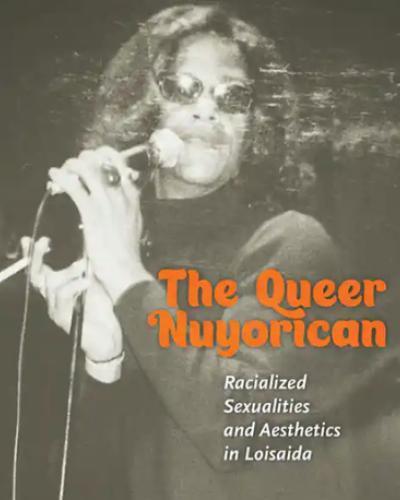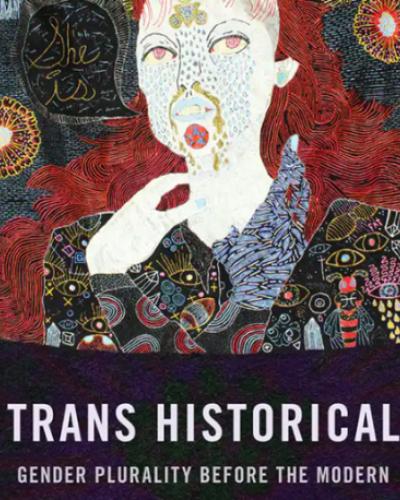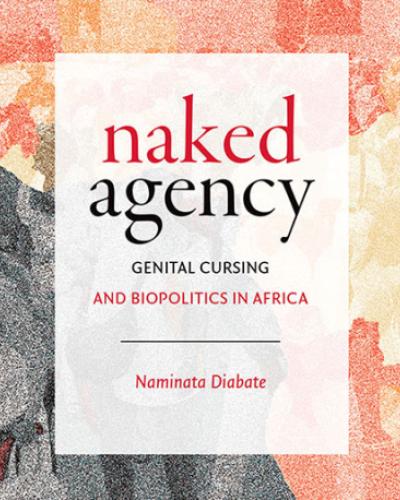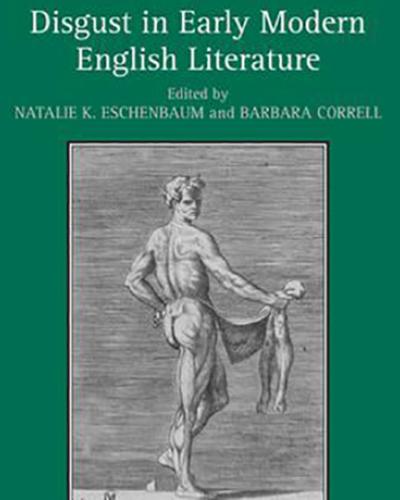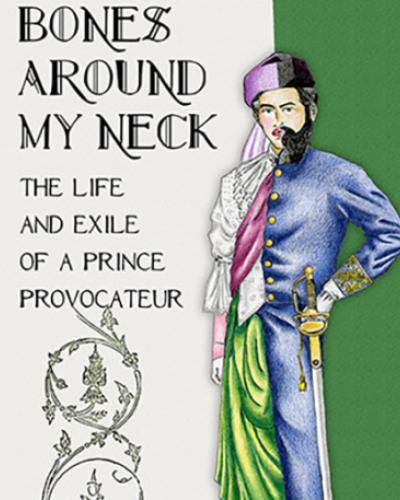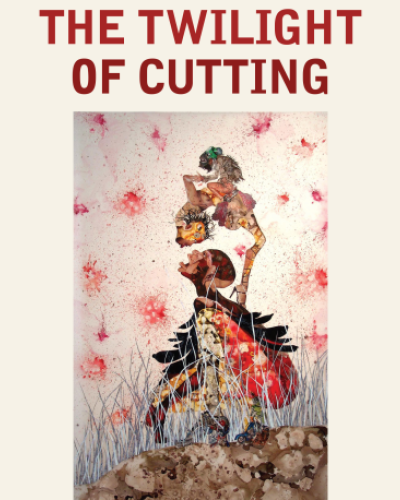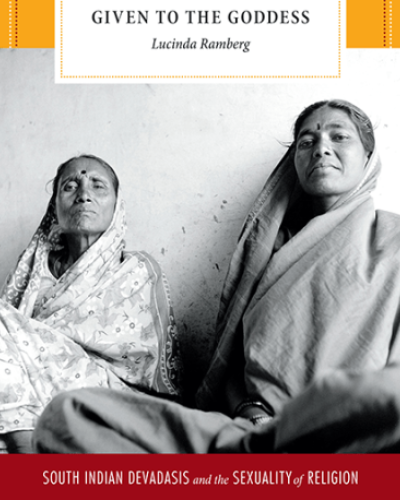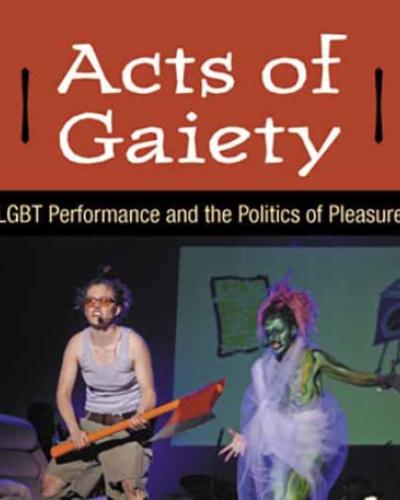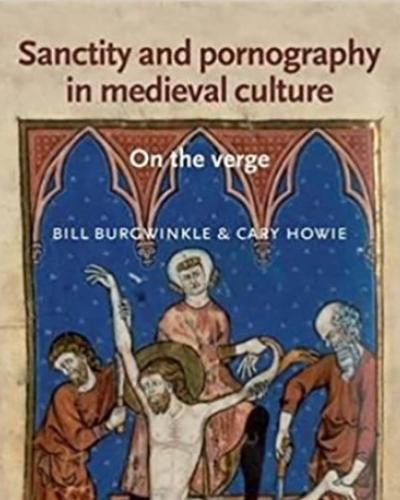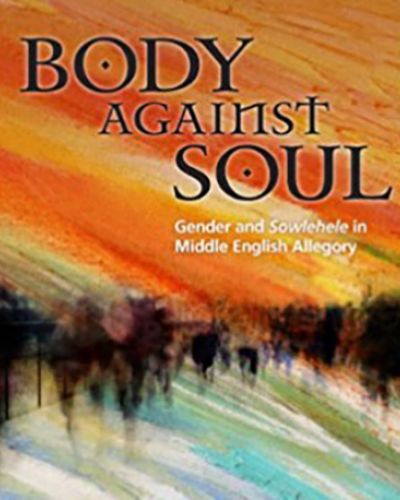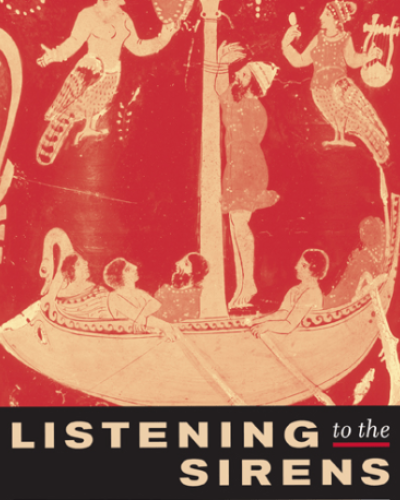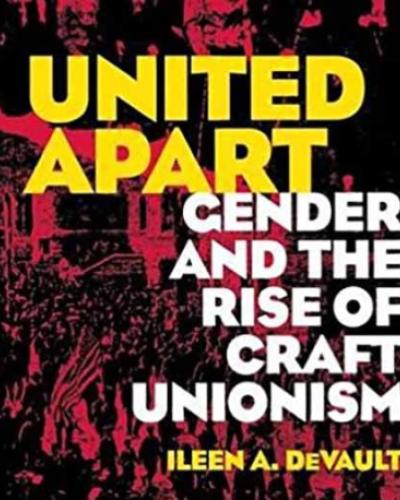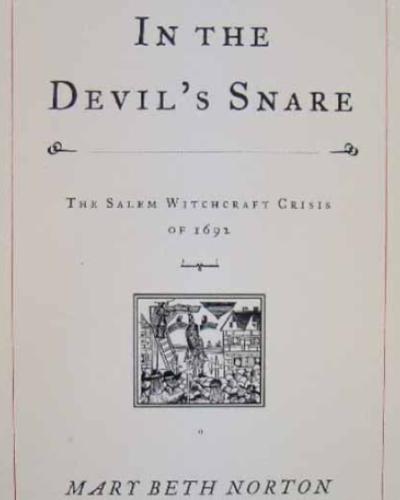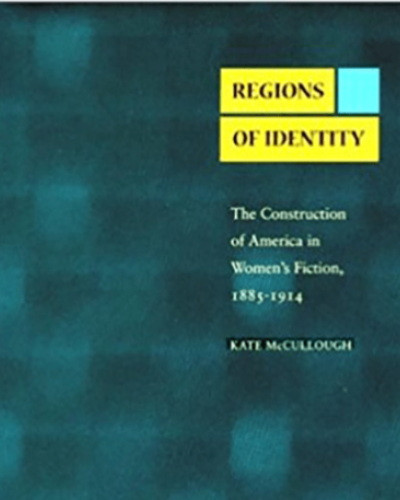The Queer Nuyorican: Racialized Sexualities and Aesthetics in Loisaida
One could easily overlook the Nuyorican Poets Cafe, a small, unassuming performance venue on New York City’s Lower East Side. Yet the space once hosted the likes of Victor Hernández Cruz, Allen Ginsberg, and Amiri Baraka and is widely credited as the homespace for the emergent nuyorican literary and aesthetic movement of the 1990s. Founded by a group of counterculturalist Puerto Rican immigrants and artists in the 1970s, the space slowly transformed the Puerto Rican ethnic and cultural associations of the epithet “Nuyorican,” as the Cafe developed into a central hub for an artistic movement encompassing queer, trans, and diasporic performance.
The Queer Nuyorican is the first queer genealogy and critical study of the historical, political, and cultural conditions under which the term “Nuyorican” shifted from a raced/ethnic identity marker to “nuyorican,” an aesthetic practice. The nuyorican aesthetic recognizes and includes queer poets and performers of color whose writing and performance build upon the politics inherent in the Cafe’s founding. Initially situated within the Cafe’s physical space and countercultural discursive history, the nuyorican aesthetic extends beyond these gendered and ethnic boundaries, broadening the ethnic marker Nuyorican to include queer, trans, and diasporic performance modalities.
Hip-hop studies, alongside critical race, queer, literary, and performance theories, are used to document the interventions made by queer and trans artists of color—Miguel Piñero, Regie Cabico, Glam Slam participants, and Ellison Glenn/Black Cracker—whose works demonstrate how the Nuyorican Poets Cafe has operated as a queer space since its founding. In focusing on artists who began their careers as spoken word artists and slam poets at the Cafe, The Queer Nuyorican examines queer modes of circulation that are tethered to the increasing visibility, commodification, and normalization of spoken word, slam poetry, and hip-hop theater in the United States and abroad.
Trans Historical: Gender Plurality Before The Modern
Trans Historical explores the plurality of gender experiences that flourished before the modern era, from Late Antiquity to the eighteenth century, across a broad geographic range, from Spain to Poland and Byzantium to Boston. Refuting arguments that transgender people, experiences, and identities were non-existent or even impossible prior to the twentieth century, this volume focuses on archives—literary texts, trial transcripts, documents, and artifacts—that denaturalize gender as a category. The volume historicizes the many different social lives of sexual differentiation, exploring what gender might have been before modern medicine, the anatomical sciences, and the sedimentation of gender difference into its putatively binary form.
The volume's multidisciplinary group of contributors consider how individuals, communities, and states understood and enacted gender as a social experience distinct from the assignment of sex at birth. Alongside historical questions about the meaning of sexual differentiation, Trans Historical also offers a series of diverse meditations on how scholars of the medieval and early modern periods might approach gender nonconformity before the nineteenth-century emergence of the norm and the normal.
Naked Agency: Genital Cursing and Biopolitics in Africa
From the publisher:
Across Africa, mature women have for decades mobilized the power of their nakedness in political protest to shame and punish male adversaries. This insurrectionary nakedness, often called genital cursing, owes its cultural potency to the religious belief that spirits residing in women's bodies can be unleashed to cause misfortunes in their targets, including impotence, disease, and death. In Naked Agency, Naminata Diabate analyzes these collective female naked protests in Africa and beyond to broaden understandings of agency and vulnerability. Drawing on myriad cultural texts, from social media and film to journalism and fiction, Diabate uncovers how women in Africa and beyond create spaces of resistance during socio-political duress, including such events as 2011 protests by Ivoirian women in Côte d’Ivoire and Paris, as well as women's disrobing in Soweto to prevent the destruction of their homes. Through the concept of naked agency, Diabate explores fluctuating narratives of power and victimhood to challenge simplistic accounts of African women's helplessness and to show how they exercise political power in the biopolitical era.
Flying Under the Radar with the Royal Chicano Air Force: Mapping a Chicano/a Art History
From the publisher:
The first book-length study of the Royal Chicano Air Force maps the history of this vanguard Chicano/a arts collective, which used art and cultural production as sociopolitical activism.
Disgust in Early Modern English Literature
Edited by Barbara Correll and Natalie K. Eschenbaum
From the publisher:
What is the role of disgust or revulsion in early modern English literature? How did early modern English subjects experience revulsion and how did writers represent it in poetry, plays, and prose? What does it mean when literature instructs, delights, and disgusts? This collection of essays looks at the treatment of disgust in texts by Spenser, Shakespeare, Donne, Jonson, Herrick, and others to demonstrate how disgust, perhaps more than other affects, gives us a more complex understanding of early modern culture. Dealing with descriptions of coagulated eye drainage, stinky leeks, and blood-filled fleas, among other sensational things, the essays focus on three kinds of disgusting encounters: sexual, cultural, and textual. Early modern English writers used disgust to explore sexual mores, describe encounters with foreign cultures, and manipulate their readers' responses. The essays in this collection show how writers deployed disgust to draw, and sometimes to upset, the boundaries that had previously defined acceptable and unacceptable behaviors, people, and literatures. Together they present the compelling argument that a critical understanding of early modern cultural perspectives requires careful attention to disgust.
Bones Around My Neck
Prince Prisdang Chumsai (1852–1935) served as Siam's first diplomat to Europe during the most dramatic moment of Siam’s political history, when its independence was threatened by European imperialism. Despite serving with patriotic zeal, he suffered irreparable social and political ruin based on rumors about fiscal corruption, sexual immorality, and political treason. Bones around My Neck pursues the truth behind these rumors, which chased Prisdang out of Siam. The book recounts the personal and political adventures of an unwitting provocateur who caused a commotion in every country he inhabited.
Ghostly Desires: Queer Sexuality & Vernacular Buddhism in Contemporary Thai Cinema
Through an examination of post-1997 Thai cinema and video art Arnika Fuhrmann shows how vernacular Buddhist tenets, stories, and images combine with sexual politics in figuring current struggles over notions of personhood, sexuality, and collective life. The drama, horror, heritage, and experimental art films she analyzes draw on Buddhist-informed conceptions of impermanence and prominently feature the motif of the female ghost. In these films the characters' eroticization in the spheres of loss and death represents an improvisation on the Buddhist disavowal of attachment and highlights under-recognized female and queer desire and persistence. Her feminist and queer readings reveal the entangled relationships between film, sexuality, Buddhist ideas, and the Thai state's regulation of heteronormative sexuality. Fuhrmann thereby provides insights into the configuration of contemporary Thailand while opening up new possibilities for thinking about queer personhood and femininity.
Obstruction
Can a bout of laziness or a digressive spell actually open up paths to creativity and unexpected insights? In Obstruction Nick Salvato suggests that for those engaged in scholarly pursuits laziness, digressiveness, and related experiences can be paradoxically generative. Rather than being dismissed as hindrances, these obstructions are to be embraced, clung to, and reoriented. Analyzing an eclectic range of texts and figures, from the Greek Cynics and Denis Diderot to Dean Martin and the Web series Drunk History, Salvato finds value in five obstructions: embarrassment, laziness, slowness, cynicism, and digressiveness. Whether listening to Tori Amos's music as a way to think about embarrassment, linking the MTV series Daria to using cynicism to negotiate higher education's corporatized climate, or examining the affect of slowness in Kelly Reichardt's films, Salvato expands our conceptions of each obstruction and shows ways to transform them into useful provocations. With a unique, literary, and self-reflexive voice, Salvato demonstrates the importance of these debased obstructions and shows how they may support alternative modes of intellectual activity. In doing so, he impels us to rethink the very meanings of thinking, work, and value.
The Twilight of Cutting: African Activism and Life After NGOs
Winner, 2017 Michelle Rosaldo Book Prize, presented by the Feminist Anthropology Section of the American Anthropological Association
The last three decades have witnessed a proliferation of nongovernmental organizations engaging in new campaigns to end the practice of female genital cutting across Africa. These campaigns have in turn spurred new institutions, discourses, and political projects, bringing about unexpected social transformations, both intended and unintended. Consequently, cutting is waning across the continent. At the same time, these endings are misrecognized and disavowed by public and scholarly discourses across the political spectrum.
What does it mean to say that while cutting is ending, the Western discourse surrounding it is on the rise? And what kind of a feminist anthropology is needed in such a moment? The Twilight of Cutting examines these and other questions from the vantage point of Ghanaian feminist and reproductive health NGOs that have organized campaigns against cutting for over thirty years. The book looks at these NGOs not as solutions but as sites of “problematization.” The purpose of understanding these Ghanaian campaigns, their transnational and regional encounters, and the forms of governmentality they produce is not to charge them with providing answers to the question, how do we end cutting? Instead, it is to account for their work, their historicity, the life worlds and subjectivities they engender, and the modes of reflection, imminent critique, and opposition they set in motion.
Ethereal Queer: Television, Historicity, Desire
In Ethereal Queer, Amy Villarejo offers a historically engaged, theoretically sophisticated, and often personal account of how TV representations of queer life have changed as the medium has evolved since the 1950s. Challenging the widespread view that LGBT characters did not make a sustained appearance on television until the 1980s, she draws on innovative readings of TV shows and network archives to reveal queer television’s lengthy, rich, and varied history. Villarejo goes beyond concerns about representational accuracy. She tracks how changing depictions of queer life, in programs from Our Miss Brooks to The L Word, relate to transformations in business models and technologies, including modes of delivery and reception such as cable, digital video recording, and online streaming. In so doing, she provides a bold new way to understand the history of television.
A Plague of Informers: Conspiracy and Political Trust in William III's England
Stories of plots, sham plots, and the citizen-informers who discovered them are at the center of this compelling study of the turbulent decade following the Revolution of 1688. By encouraging informers, imposing loyalty oaths, suspending habeas corpus, and delaying the long-promised reform of treason trial procedure, the Williamite regime protected itself from enemies and cemented its bonds with supporters, but also put its own credibility at risk.
Given to the Goddess: South Indian Devadasis and the Sexuality of Religion
Winner, 2015 Michelle Rosaldo Book Prize, presented by the Feminist Anthropology Section of the American Anthropological Association
Acts of Gaiety: LGBT Performance and the Politics of Pleasure
Acts of Gaiety explores the mirthful modes of political performance by LGBT artists, activists, and collectives that have inspired and sustained deadly serious struggles for revolutionary change. The book explores antics such as camp, kitsch, drag, guerrilla theater, zap actions, rallies, manifestos, pageants, and parades alongside more familiar forms of "legitimate theater." Against queer theory's long-suffering romance with mourning and melancholia and a national agenda that urges homosexuals to renounce pleasure if they want to be taken seriously by mainstream society, Acts of Gaiety seeks to reanimate notions of "gaiety" as a political value for LGBT activism.
The book mines the archives of lesbian-feminist activism of the 1960s-70s, highlighting the outrageous gaiety that lay at the center of the social and theatrical performances of the era and uncovering original documents long thought to be lost. Juxtaposing historical figures such as Valerie Solanas and Jill Johnston with more recent performers and activists (including Hothead Paisan, Bitch & Animal, and the Five Lesbian Brothers), Warner shows how reclaiming this largely discarded and disavowed past elucidates possibilities for being and belonging. Acts of Gaiety explores the mutually informing histories of gayness as politics and as joie de vivre, along with the centrality of liveliness to queer performance and protest.
Sanctity and Pornography in Medieval Culture
by Cary Howie and Bill Burgwinkle
From the publisher:
Sanctity and pornography in medieval culture exposes the complexity of bodily exposure in medieval devotion and contemporary pornographic cultures. Through readings of texts and images, sacred and profane, from preimodern France and Italy as well as Anglo-American modernity, the book makes a case for paying closer attention to the surfaces of our bodies and the desires that those surfaces can articulate and arouse.
From the Old French life of Saint Alexis to the work of writer-filmmaker Miranda July, from Wakefield Poole to Pietro Aretino, these are texts and images that diminish the distance between premodern Europe and contemporary California, between the sacred and the profane, as they demonstrate how, in the end as in the beginning, the surface of things is never simple.
Body Against Soul: Gender and Sowlehele in Middle English Allegory
In medieval allegory, Body and Soul were often pitted against one another in debate. In Body Against Soul: Gender and Sowlehele in Middle English Allegory, Masha Raskolnikov argues that such debates function as a mode of thinking about psychology, gender, and power in the Middle Ages. Neither theological nor medical in nature, works of sowlehele (“soul-heal”) described the self to itself in everyday language—moderns might call this kind of writing “self-help.” Bringing together contemporary feminist and queer theory along with medieval psychological thought, Body Against Soul examines Piers Plowman, the “Katherine Group,” and the history of psychological allegory and debate. In so doing, it rewrites the history of the Body to include its recently neglected fellow, the Soul.
The topic of this book is one that runs through all of Western history and remains of primary interest to modern theorists—how “my” body relates to “me.” In the allegorical tradition traced by this study, a male person could imagine himself as a being populated by female personifications, because Latin and Romance languages tended to gender abstract nouns as female. However, since Middle English had ceased to inflect abstract nouns as male or female, writers were free to gender abstractions like “Will” or “Reason” any way they liked. This permitted some psychological allegories to avoid the representational tension caused by placing a female soul inside a male body, instead creating surprisingly queer same-sex inner worlds. The didactic intent driving sowlehele is, it turns out, complicated by the erotics of the struggle to establish a hierarchy of the self’s inner powers.
“Raskolnikov deftly shows how gender is staged in the context of allegorical debates on death and life. Raskolnikov’s brilliance is to show how voices are split and allocated to various figures, often personified as male and female, and how these talking figures debate not only the place and meaning of the body, but questions of moral harm and the possibility of true knowledge. These debates are hardly philosophy in a recognizable sense, but they do engage philosophical questions through giving voice to various gendered characters. What emerges time and again is a self in a distanced relation to itself, often embattled, often split, for these dialoguing characters are and are not separate. What becomes clear throughout these debates is that the action involved is often capricious and arbitrary, and so the question of free will, of the efficacy of human action in the face of contingency, is posed again and again in a dramatic and dialogic genre whose action or plot lacks all signs of Aristotelian likelihood and probability. The book works in a subtle and surprising way to locate gender as a point of view, showing how personifications essential to the debate genre show the contours of gender and subjectivity as they are assumed through speech. This is a disorientingly smart and engaging text, essential to the early modern understanding of gender.” —Judith Butler, Maxine Elliot Professor at the University of California, Berkeley
Claustrophilia: The Erotics of Enclosure in Medieval Literature
From the publisher:
Through extended readings of English, French, and Italian writers of the Thirteenth and Fourteenth centuries, Claustrophilia shows that medieval enclosures actually make room for desires and communities that a poetics of pure openness would exclude.
Listening to the Sirens: Musical Technologies of Queer Identity from Homer to Hedwig
In this fresh and innovative study, Judith A. Peraino investigates how music has been used throughout history to call into question norms of gender and sexuality. Beginning with a close examination of the mythology surrounding the sirens—whose music seduced Ulysses into a state of mind in which he would gladly sacrifice everything for the illicit pleasures promised in their song—Peraino goes on to consider the musical creatures, musical gods and demigods, musical humans, and music-addled listeners who have been associated with behavior that breaches social conventions. She deftly employs a sophisticated reading of Foucault as an organizational principle as well as a philosophical focus to survey seductive and transgressive queerness in music from the Greeks through the Middle Ages and to the contemporary period. Listening to the Sirens analyzes the musical ways in which queer individuals express and discipline their desire, represent themselves, build communities, and subvert heterosexual expectations. It covers a wide range of music including medieval songs, works by Handel, Tchaikovsky and Britten, women's music and disco, performers such as Judy Garland, Melissa Etheridge, Madonna, and Marilyn Manson, and the movies The Rocky Horror Picture Show and Hedwig and the Angry Inch.
United Apart: Gender and the Rise of Craft Unionism
<p>In the late nineteenth century, most jobs were strictly segregated by sex. And yet, despite their separation at work, male and female employees regularly banded together when they or their unions considered striking. In her groundbreaking book, Ileen A. DeVault explores how gender helped to shape the outcome of job actions—and how gender bias became central to unionism in America.</p>
<p>Covering the period from the formation of the American Federation of Labor in 1886 to the establishment of the Women's Trade Union League in 1903, DeVault analyzes forty strikes from across the nation in the tobacco, textile, clothing, and boot and shoe industries. She draws extensively on her research in local newspapers as she traces the daily encounters among male and female coworkers in workplaces, homes, and union halls. Jobs considered appropriate for men and those for women were, she finds, sufficiently interdependent that the success of the action depended on both sexes cooperating. At the same time, with their livelihoods at stake, tensions between women and men often appeared.</p>
<p>The AFL entered the twentieth century as the country's primary vehicle for unionized workers, and its attitude toward women formed the basis for virtually all later attempts at their organization. United Apart transforms conventional wisdom on the rise of the AFL by showing how its member unions developed their central beliefs about female workers and how those beliefs affected male workers as well.</p>
In the Devil's Snare: The Salem Witchcraft Crisis of 1692
Award-winning historian Mary Beth Norton reexamines the Salem witch trials in this startlingly original, meticulously researched, and utterly riveting study.
In 1692 the people of Massachusetts were living in fear, and not solely of satanic afflictions. Horrifyingly violent Indian attacks had all but emptied the northern frontier of settlers, and many traumatized refugees—including the main accusers of witches—had fled to communities like Salem. Meanwhile the colony’s leaders, defensive about their own failure to protect the frontier, pondered how God’s people could be suffering at the hands of savages. Struck by the similarities between what the refugees had witnessed and what the witchcraft “victims” described, many were quick to see a vast conspiracy of the Devil (in league with the French and the Indians) threatening New England on all sides. By providing this essential context to the famous events, and by casting her net well beyond the borders of Salem itself, Norton sheds new light on one of the most perplexing and fascinating periods in our history.
Regions of Identity: The Construction of America in Women's Fiction, 1885-1914
Examining turn-of-the-century American women s fiction, the author argues that this writing played a crucial role in the production of a national fantasy of a unified American identity in the face of the racial, regional, ethnic, and sexual divisions of the period. Contributing to New Americanist perspectives of nation formation, the book shows that these writers are central to American literary discourses for reconfiguring the relationship among constituent regions in order to reconfigure the nation itself. Analyzing fiction by Sarah Orne Jewett, Florence Converse, Pauline Hopkins, Mar'a Amparo Ruiz de Burton, Kate Chopin, and Sui Sin Far, the book foregrounds the ways each writer s own location on the grid of American identities shapes her attempt to forge an inclusive narrative of America. This disparate group of writers Northerners, Southerners, Californios, African Americans, Chinese Americans, Anglo Americans, heterosexuals, and lesbians reflects the widespread nature of concerns over national identity and the importance of regions to representations of that identity.
Decadence and Catholicism
Romantic writers had found in Christianity a poetic cult of the imagination, an assertion of the spiritual quality of beauty in an age of vulgar materialism. The decadents, a diverse movement of writers, were the climax and exhaustion of this romantic tradition. In their art, they enacted the romance of faith as a protest against the dreariness of modern life. Ellis Hanson teases out two strands—eroticism and aestheticism—that rendered the decadent interest in Catholicism extraordinary. More than any other literary movement, the decadents explored the powerful historical relationship between homoeroticism and Roman Catholicism. Why, throughout history, have so many homosexuals been attracted to Catholic institutions that vociferously condemn homosexuality? This perplexing question is pursued in this elegant and innovative book.
Late-nineteenth-century aesthetes found in the Church a peculiar language that gave them a means of artistic and sexual expression. The brilliant cast of characters that parades through this book includes Oscar Wilde, Charles Baudelaire, J.-K. Huysmans, Walter Pater, and Paul Verlaine. Art for these writers was a mystical and erotic experience. In decadent Catholicism we can glimpse the beginnings of a postmodern valorization of perversity and performativity. Catholicism offered both the hysterical symptom and the last hope for paganism amid the dullness of Victorian puritanism and bourgeois materialism.

